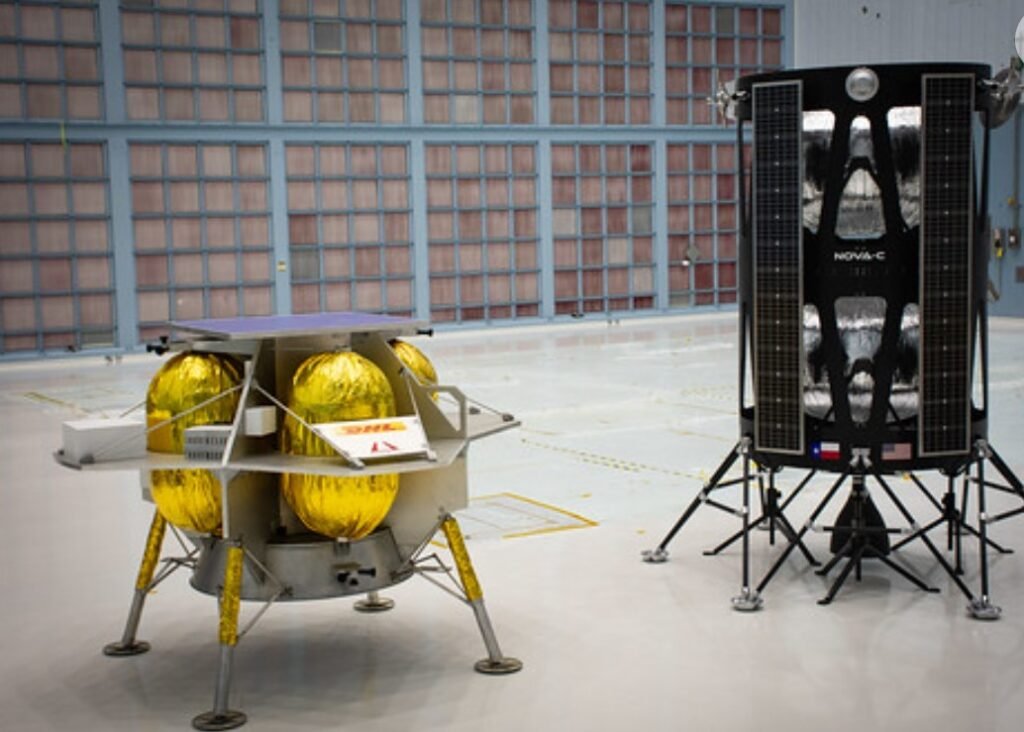The Moon is about to receive some new visitors, as NASA, United Launch Alliance (ULA), and Astrobotic prepare for the first commercial robotic landing on the lunar surface. The mission, called Peregrine Mission One, is part of NASA’s Commercial Lunar Payload Services (CLPS) initiative and Artemis program, which aim to explore the Moon and pave the way for human exploration.
The launch is scheduled for no earlier than Sunday, Dec. 24, 2023, from Space Launch Complex 41 at the Cape Canaveral Space Force Station in Florida. The launch window opens at 2:18 a.m. EST and lasts for two hours. The mission will mark the inaugural launch of ULA’s new Vulcan rocket, a next-generation launch vehicle that features a reusable engine, advanced avionics, and a smart payload fairing.
The Vulcan rocket will carry Astrobotic’s Peregrine lander, a 1.8-meter tall spacecraft that weighs about 1,800 kilograms and can carry up to 90 kilograms of payloads. The lander is equipped with a propulsion system, a navigation system, a communication system, and a landing sensor system. The lander also has a deployable ramp that allows the payloads to access the lunar surface.
The Landing: A Commercial Breakthrough for Lunar Exploration
The landing is expected to occur in early 2024, after a six-day journey from Earth to the Moon. The landing site is located in Lacus Mortis, a large plain in the northeastern part of the Moon. The site was chosen for its scientific interest, its accessibility, and its safety.
The landing will be a historic milestone for lunar exploration, as it will be the first time that a commercial entity delivers payloads to the Moon under a contract with NASA. The mission will also be the first U.S. lunar landing since the Apollo 17 mission in 1972, and the first soft landing on the lunar surface since the Chang’e 4 mission in 2019.

The mission will demonstrate the capabilities and benefits of the CLPS initiative, which allows NASA to partner with commercial providers to deliver scientific and technological payloads to the Moon. The initiative aims to establish a regular cadence of lunar deliveries, support the Artemis program, and enable future human missions to the Moon and beyond.
The Payloads: A Diverse Array of Science and Technology
The Peregrine lander will carry 14 payloads from NASA and 10 payloads from other commercial and international partners. The payloads include instruments, experiments, demonstrations, and commemorative items. Some of the payloads are:
- Lunar Surface Magnetometer (LSM): A NASA instrument that will measure the magnetic field at the landing site and study its origin and evolution.
- Near-Infrared Volatile Spectrometer System (NIRVSS): A NASA instrument that will measure the surface temperature and look for signs of water and other volatiles on the Moon.
- Laser Retro-Reflector Array (LRA): A NASA instrument that will reflect laser beams from Earth and enable precise measurements of the distance and position of the lander.
- Heimdall: A NASA camera system that will capture high-resolution images and videos of the landing and the lunar surface.
- MoonRanger: A NASA rover that will autonomously explore the vicinity of the landing site and test new navigation and communication technologies.
- CubeRover: A commercial rover developed by Astrobotic and Carnegie Mellon University that will demonstrate a small, low-cost, and modular platform for lunar mobility.
- Celestis Luna 02: A commercial payload that will carry human ashes and DNA samples to the Moon as a memorial service.
- DHL MoonBox: A commercial payload that will deliver small personal items and mementos to the Moon for customers around the world.
- Lunar Library: A commercial payload that will store a collection of digital and analog data, including the Wikipedia database, on the Moon as a backup for humanity.
- Lunar Demonstration of a Reconfigurable, Radiation Tolerant Computer System (RadPC): An international payload from Mexico that will test a novel computer system that can adapt to the harsh radiation environment of the Moon.
- Alén Space: An international payload from Spain that will test a new platform for lunar communication and Internet of Things applications.
- UAE Space Agency: An international payload from the United Arab Emirates that will carry educational and cultural items to the Moon to inspire future generations of Emirati space explorers.
The payloads will perform various scientific and technological objectives, such as studying the lunar environment, testing new hardware and software, demonstrating new capabilities, and inspiring public engagement. The payloads will also contribute to NASA’s lunar knowledge and support the agency’s goals of sending the first woman and the first person of color to the Moon under the Artemis program.
The Coverage: A Live Broadcast of the Launch and the Landing
The launch and the landing will be broadcast live on NASA+, NASA Television, the NASA app, and the agency’s website, with prelaunch events starting Thursday, Jan. 4. The coverage will include interviews with NASA, ULA, and Astrobotic officials and experts, as well as live views of the launch pad, the rocket, and the lander. The coverage will also feature updates on the status of the mission, the countdown, and the launch.
The landing will be streamed live by Astrobotic, with commentary and analysis from the mission team. The landing will also be shown on NASA’s platforms, with additional information and context from NASA’s experts. The landing will be a thrilling and suspenseful event, as the lander will autonomously descend to the lunar surface, avoiding hazards and obstacles, and touching down softly and safely.
The launch and the landing will be historic events that will showcase the achievements and innovations of NASA, ULA, and Astrobotic, as well as their commercial and international partners. The mission will also mark a new era of lunar exploration, as the first commercial robotic landing on the Moon will open new opportunities and possibilities for science, technology, and humanity.
